
Amazing
Innovative Overpass To Reduce Wildlife Deaths and Injuries
Sweden’s declaration that it will build a network of animal crossings has been the latest example of international attempts to assist animals navigating busy roads.
Sweden’s key highway draws to a complete halt each April. Dozens of reindeer led by indigenous Sami shepherds scramble all across E4 when they make their way west to the hills after a winter spent munching on lichen near Ume.
The crossings are becoming increasingly fractious as Sweden’s city’s main highway has become extremely busy, particularly if officials do not reach in time to close the route.
When drivers attempt to pass the reindeer as they cross the road, they spook the animals, causing lengthy gridlock as their Sami caregivers struggle to regain control.
According to Per Sandström, a land ecologist at the Swedish University of Agricultural Sciences who acts as a mediator between the Sami and municipalities to develop the crossings, these lichen lands can be precious for the reindeer during difficult climate conditions.
Swedish authorities announced this week that they would construct up to twelve viaducts for the reindeers, also known as “renoducts,” to help with the crossings and make it easier for reindeer herds to access grazing.
The climate crisis has hit the country’s 4,500 Sami herders and 250,000 reindeer hard, with forest fires in the summer and freezing rain in the winter hiding lichen under impenetrable sheets of ice.
Long-range mammals that aren’t meant to live in these tiny, isolated pockets would profit most from this scheme, according to Sandström, who began his career in the United States, helping to establish grizzly bear ecological pathways in Montana.
The renoducts form part of a broader network of ecological bridges and crosswalks that seek to link fragmented ecosystems across the world.
Underpasses were also used to protect jaguars against traffic on Mexico’s Yucatán peninsula.
Porcupines, apes, and kinkajous have used organic foliage crossings in the Peruvian Amazon to cross natural gas pipelines.
Bridges have been constructed over streets on Christmas Island to allow hundreds of thousands of red crabs to migrate from the jungle to the coasts on their annual cycle.
The wildlife bridges prevent several of the millions of wildlife fatalities each year on the world’s roads and mitigate human infrastructure’s unintended effects.
Since the bustling motorways around Los Angeles have fragmented habitats with low genetic variation, there are already indications of inbreeding amongst lions in the Santa Monica Mountains in southern California. An $87 million (£63 million) wild animals bridge is being built north of Los Angeles to help save the local mountain lion community from destruction. It will be the world’s largest.
Animals may be harmed if their ecosystem is separated, as they may be unable to obtain food and water.
According to Mark Benson, a representative of Parks Canada’s human-wildlife convergence group for Lake Louise, Yoho, and Kootenay, they might also have an effect on population genetic diversity.
In the United Kingdom, wildlife bridges are projected to be included in the government’s wildlife recovery network, which seeks to link biodiverse areas as part of a 25-year environmental plan.
Natural England noted the environmental benefits in a 2015 study, citing the Netherlands as an example, and is creating a network of “ecoducts” to help animals travel across the world.
Highways England is progressively constructing wildlife bridges as a component of infrastructure projects around the region, with more expected for the future. However, some conservationists believe that not enough is being achieved in the United Kingdom.
Although significant demonstrations against the project failed to halt construction, De Retuerto believes they signaled a change of attitude toward environmental concerns in the UK.
He claims that a sustainable walkway at Twyford Down will be built solely for this purpose to invigorate the wildlife recovery network.
Amazing
Utah Woman Donates Kidney to Man She Met on a Hike
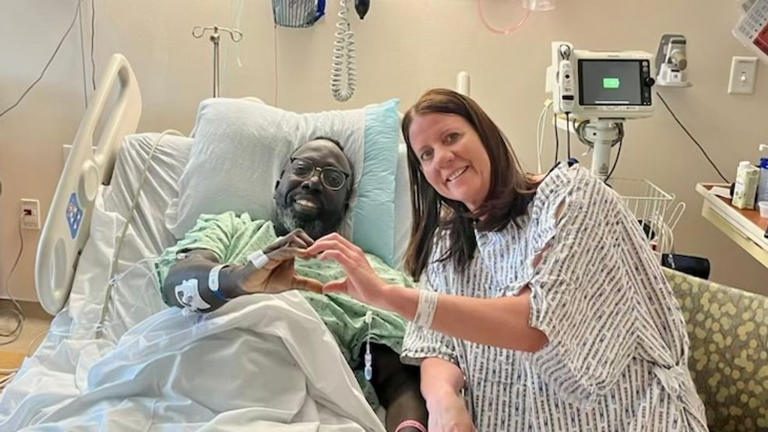
In an inspiring turn of events, a Utah County woman donated her kidney to a man she had only recently met on a hike.
Krissy Miller crossed paths with Shiller Joseph while hiking on Y Mountain, near Brigham Young University, in September 2023. During their chance meeting, Miller, a 49-year-old mother of four, learned that Joseph was in desperate need of a kidney. Without hesitation, she offered one of hers. Following medical tests, it was confirmed that they were a compatible match.
The story took an even more heartwarming turn when, after their initial encounter, Miller presented Joseph with what appeared to be a box of rolls. But inside the box was a sign that revealed her incredible gift — she would be his kidney donor.
On Monday, the pair reunited at Intermountain Health in Murray after a successful transplant surgery. Their emotional meeting came after months of preparation and surgery that gave Joseph, 45, a new chance at life.
Joseph, who has lupus, had been on the kidney transplant waiting list for some time. The average wait time for a kidney transplant in the U.S. is three to five years, with more than 90,000 people currently waiting for a life-saving organ. The National Kidney Foundation estimates that around 20 people die each day while waiting for a transplant, underscoring the critical need for organ donors.
Miller’s decision to donate her kidney without hesitation showcases the profound impact one person can make in the face of overwhelming need. This act of kindness not only saved Joseph’s life but also shines a spotlight on the importance of organ donation.
Amazing
A Young Hero for Hens
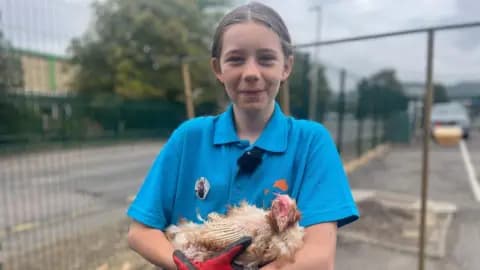
Harriet, a 12-year-old from Chart Sutton, Kent, is making a difference in the lives of farm hens. Every Saturday morning, she volunteers with Fresh Start For Hens, a local charity dedicated to finding new homes for commercial egg-laying hens.
These hens, typically 72 weeks old, are often destined for slaughter when their egg production declines. However, Fresh Start For Hens buys them from farms and rehomes them as pets.
At collection points like the one in Aylesford, Harriet helps transfer over 100 hens from farms to their new owners. The charity ensures potential adopters provide suitable living conditions for the hens, requiring photos of coops and runs, along with a minimum donation of £2.75 per bird.
Many of these hens arrive in poor condition, sometimes even bald from stress-induced feather pecking. Harriet explains, “They get quite bored, so they peck each other and rip out their feathers.” Remarkably, after a few weeks in their new homes, most hens regain their feathers.
Harriet’s dedication earned her the BBC Young Reporter award. She hopes her story will inspire more farmers to choose rehoming over slaughter for their hens. As Harriet puts it, “It makes me feel proud that I can do something for these chickens, save their lives and give them to these happy families.”
The charity operates entirely on volunteer efforts. Petrina Thomas, who leads collection mornings, believes they’re all motivated by a simple principle: “the love of hens.”
Amazing
Social Media Miracle: Stranger’s Selfless Act Saves Baby’s Life
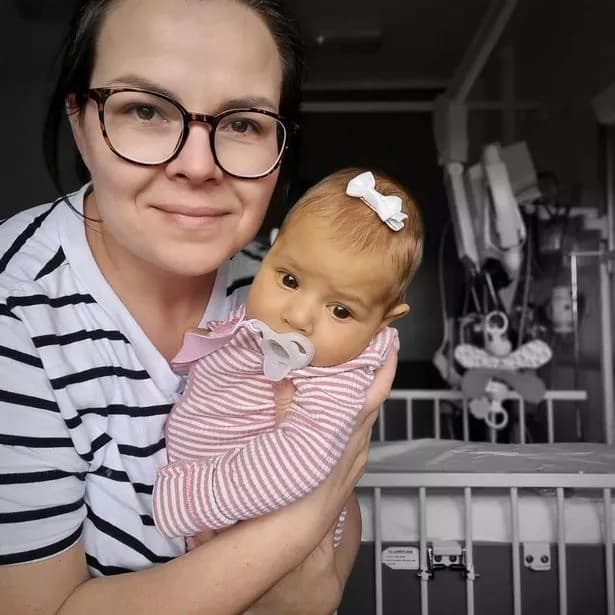
Amazing human kindness helped give a six-month-old girl named Helin Dinlera second chance at life. It’s all thanks to the generosity of a stranger who responded to an urgent online plea. Helin, diagnosed with a rare and life-threatening liver condition called Biliary Atresia, faced a grim prognosis without a liver transplant.
When no family members were found to be suitable donors, Helin’s mother, Anna Shushura, turned to social media in a desperate attempt to find help. Her emotional appeal caught the attention of Letty Fenlon, a 27-year-old show jumper from Yorkshire, who felt compelled to act.
Letty, already registered as an organ donor, underwent extensive testing and was confirmed as a match for Helin. Despite the risks associated with major surgery, Letty’s determination to help prevailed. In May, she underwent a six-hour procedure to donate a portion of her liver to the infant.
The transplant was successful, and now, at nine months old, Helin is thriving. While she still requires regular medical check-ups, her progress has been remarkable. Helin’s family expresses immense gratitude towards Letty, whose selfless act has given their daughter a chance at a normal life.
Amazing
Trust and Perseverance: The Remarkable Rescue of Lessie from the Boundary Waters
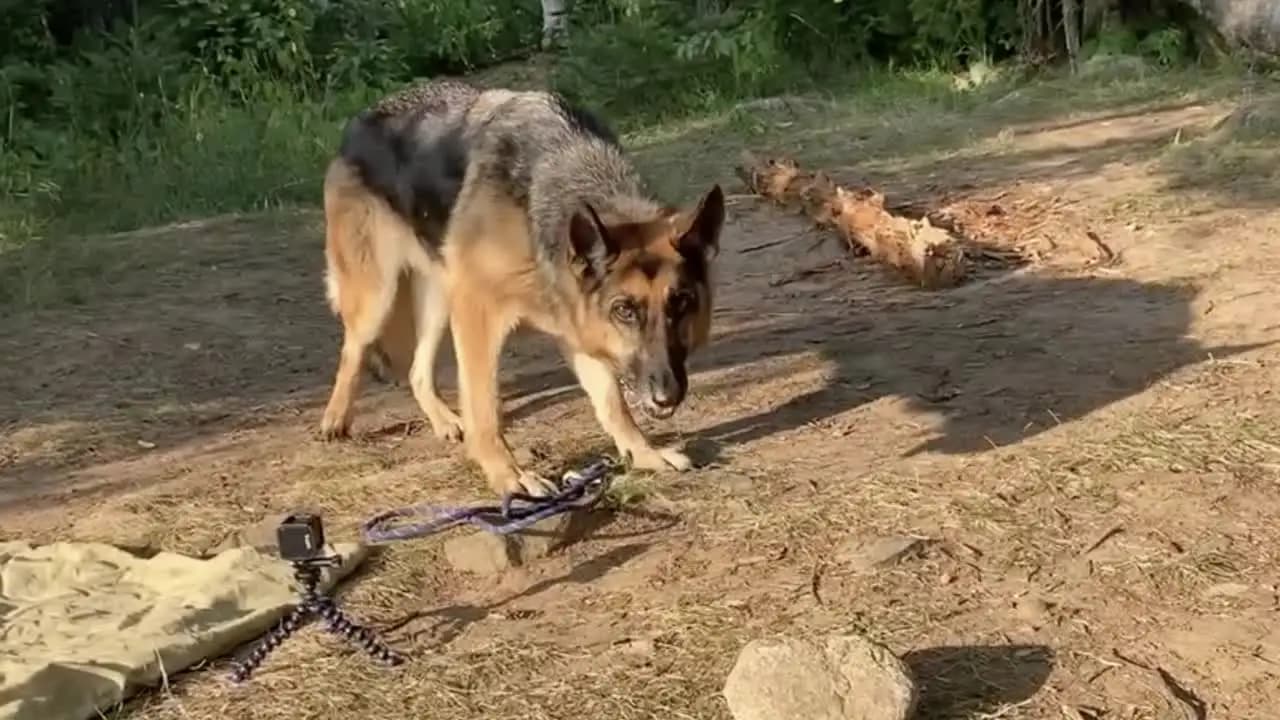
A heartwarming tale of survival and rescue has emerged from Minnesota’s Boundary Waters, where a German Shepherd named Lessie was found after being lost for 55 days. This story highlights the importance of trust-building and community effort in reuniting lost pets with their families.
Lessie’s ordeal began when she escaped following a car accident on the Gunflint Trail near Grand Marais in late June. The Retrievers, a non-profit organization dedicated to finding missing dogs, immediately mobilized to assist in the search.
After a month of uncertainty, hope was rekindled when Lessie was spotted near Ham Lake, miles from the accident site. A Minneapolis-based volunteer, familiar with the area, stepped up to help. Armed with guidance from The Retrievers and his previous experience, he set up camp to search for Lessie.
The volunteer’s patient approach proved crucial. Using food and a trail camera, he gradually gained Lessie’s trust over several days. His persistence paid off when he finally managed to leash Lessie and lead her to safety, facilitating an emotional reunion with her owners.
Jennifer Cadigan of The Retrievers emphasized the intelligence and resilience of dogs, noting that Lessie likely survived on discarded fish remains from nearby campsites. This remarkable story serves as an inspiring reminder to never lose hope when searching for a lost pet.
The successful rescue of Lessie after nearly two months in the wilderness underscores the effectiveness of combining community involvement, expert guidance, and unwavering determination in resolving missing pet cases.
Amazing
Freedom at Last: Charlie the Elephant Begins New Life After Four Decades in Captivity
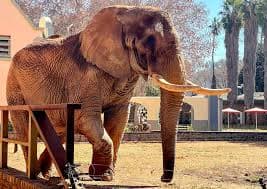
A momentous event in South African wildlife conservation has unfolded with the release of Charlie, the country’s last zoo elephant, into a natural habitat after 40 years of confinement. This historic transition marks the end of an era for elephant captivity in South African zoos and represents a significant victory for animal welfare advocates.
Charlie’s journey began in 1984 when he was taken from Zimbabwe’s Hwange National Park as a two-year-old calf. His life in captivity included years of performing in a circus before being transferred to South Africa’s national zoo in the early 2000s. During his time at the zoo, Charlie reportedly experienced the loss of four fellow elephants, including his own offspring.
The push for Charlie’s release gained momentum in recent years as concerns about his well-being grew. Animal welfare organizations, including the EMS Foundation and Four Paws, played crucial roles in negotiating with the South African government and providing scientific evidence of the detrimental effects of captivity on elephants.
After a tense four-hour journey, Charlie arrived at his new home in the Shambala Private Reserve in Limpopo province. This 10,000-hectare sanctuary, known for its success in reintegrating animals into the wild, now hosts Charlie as he begins his rehabilitation process.
Veterinary and behavioral experts are closely monitoring Charlie’s adaptation to his new environment. Early signs are promising, with reports of Charlie showing excitement upon hearing other elephants and attempting to communicate with them. However, the rehabilitation process is expected to be gradual, allowing Charlie to rediscover his natural instincts and potentially integrate with the reserve’s existing elephant population.
This release not only signifies a new chapter for Charlie but also represents a broader shift towards improved animal welfare practices in South Africa. As the country continues to grapple with challenges facing its wild elephant population, including poaching and habitat loss, Charlie’s story serves as a reminder of the importance of conservation efforts and the ethical treatment of wildlife.
-

 OMG6 years ago
OMG6 years agoA Couple Gave Birth to the Most Beautiful Twins Ever
-

 OMG7 years ago
OMG7 years ago20 Rare Historical Photos
-

 OMG6 years ago
OMG6 years agoHilarious Airport Photos
-

 Cute6 years ago
Cute6 years agoMom Refuses to Let Daughter Eat Sugar and Years Later This is What She Grows Into
-

 OMG6 years ago
OMG6 years agoTop Secret Air Force One Facts That You Never Knew
-
OMG6 years ago
The Funniest Yearbook Photos Of All Time
-

 OMG6 years ago
OMG6 years agoRetired Mathematician Restores Log Cabin
-

 OMG5 years ago
OMG5 years agoWhat Happened When This ‘Duck Dynasty’ Legend Chopped Off His Beard?